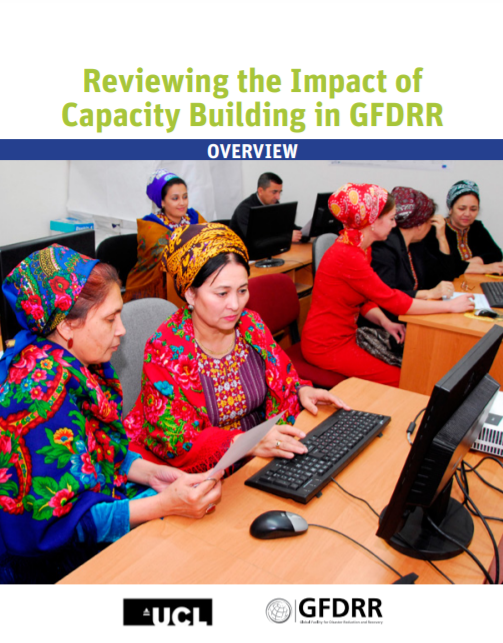The Global Facility for Disaster Reduction and Recovery (GFDRR) devotes a significant proportion of its resources—up to 24 percent—to capacity-building efforts. In line with its mission, this is aimed at boosting the capacity of developing countries to better understand emerging disaster risks, reduce their vulnerabilities to natural hazards, and adapt to climate change. Capacity-building activities are generally integrated into GFDRR projects to support the overall objectives, rather than standalone projects. However, despite the level of investment, capacity building is often considered secondary to larger activities. To date, some of GFDRR’s capacity-building activities have been perceived as scattered by clients, partners, and colleagues at the World Bank. Moreover, there is little systemic knowledge about the effectiveness and long-term impact of capacity-building activities within GFDRR or, more generally, within the broader disaster risk management (DRM) community. It appears, even anecdotally from current practice, that GFDRR could better leverage the impact of capacity building. In order to address this analysis and practice gap, this study assesses the effectiveness of capacity building across the GFDRR portfolio. The report evaluated projects active in fiscal years 2014 and 2015 (FY14 and FY15), focusing on “human capacity building – developing and sharing knowledge and skills, as well as consensus and network building.

